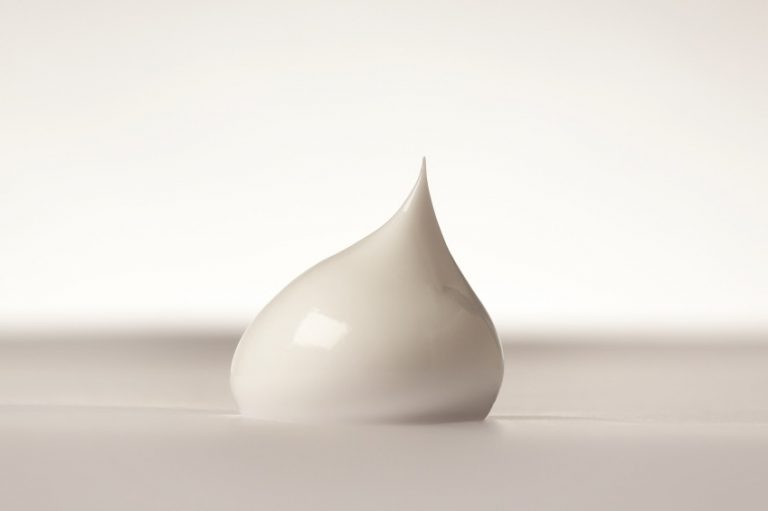Transdermal Creams Confirmed As Best For Hormone Use
The New York Times reported on how best to tackle menopausal symptoms, and transdermal bioidentical hormones get a thumbs up.

There is often some doubt about whether applying a simple cream can help with menopause symptoms, but if the cream contains bioidentical hormones, then that is indeed the case.
I have seen several comments recently questioning that progesterone can be absorbed through the skin, but like all hormones it is extremely well absorbed.
In fact, of all the methods of taking hormones, applying to the skin has been shown to be the most effective.
Why bioidentical hormones?
Ever since the report of the WHI (women Health Initiative) raised concerns about the use of HRT both for its high and often unopposed levels of oestrogen, and the side effects associated with the synthetic progestins that are often in included in it.
In the UK the maximum recommended time on HRT is five years, and the American Congress of Obstetricians and Gynecologists has also revised its guidelines for effective treatment of the symptoms of menopause.
Hot flushes are the most troublesome symptom of menopause and simply replacing oestrogen, which has been the standard practice, was largely discredited by the findings of the long-term clinical trial called the Women’s Health Initiative.
It found that the most popular form of hormone replacement, a pill that combined oestrogen and synthetic progestin, increased a woman’s risk of heart disease, breast cancer, stroke and blood clots.
This caused many women to rethink HRT and to look for more natural methods to help with flushes. Alternatives from soy products to herbs such as black cohosh and sage are popular, but there has been no conclusive evidence to say there were effective against menopause symptoms.
New information on treatments for menopause symptoms
At the time of the WHI report, bioidentical hormones were not being widely used and the work of Dr John Lee – the pioneer of progesterone cream usage – was not well known.
Now bioidentical progesterone, oestrogen, and a combined bioidentical progesterone and oestrogen cream are available to help women with symptoms of menopause in a more natural way.
However, there is a bulletin, prepared by Dr. Clarisa R. Gracia, an associate professor of obstetrics and gynaecology at the University of Pennsylvania, which has examined the various claims and scores of studies.
It offers treatment recommendations based on the best available evidence and it seems that oestrogen in combination with a natural progesterone, is the “most effective therapy” for curbing hot flushes, the report found.
Approval for transdermal hormone creams
However, the report also said that the transdermal route is considered safer as when absorbed through the skin, the Hormones are 100% absorbed, but this is not the case when hormones are taken by mouth and have to be processed through the liver where much of its content can be lost.
Also, taking by mouth has proved problematic in terms of side-effects for some women, particularly in terms of digestive issues.
Also hormones given orally have to be in much higher dosages to compensate for the loss that occurs as they are processed through the liver, and bioidentical cream formula hormones can be in much smaller doses to be effective.
The report found little or no data to support the use of herbal remedies, vitamins, phytoestrogens (like isoflavones, soy and red clover) or acupuncture to relieve hot flushes although many women anecdotally do find such remedies helpful for less severe symptoms.
It did recommend “common sense lifestyle solutions” like dressing in layers, lowering room temperatures, consuming cool drinks, and avoiding alcohol and caffeine. For overweight women, weight loss can also help.
These are sensible ideas, and ones most women will certainly already be aware of, and the issue of being overweight is certainly a common issue at menopause.
It is related to the fact that oestrogen is no longer being produced in the ovaries and so the body switches production into the fat cells.
This means that there is more weight on the stomach, abdomen and thighs and what women experience as more belly fat or a ‘muffin top’.
Also, because more oestrogen is being produced there, and that increases the risk for oestrogen dominance and the associated health issues.
Conclusion
The positive from the report from those wishing a natural alternative to HRT is the acknowledgement that transdermal application of hormones is the most effective method – and that is exactly what you get with bioidentical hormone creams.
The majority of women are offered HRT of oestrogen and a synthetic progestin for their symptoms at menopause. However, for those who wish to avoid HRT, and have found herbal remedies or dietary changes to be largely ineffective, then using bioidentical hormones is the solution an increasing number of women are turning to.
Helpful information:
Rebalancing with progesterone to oppose excess oestrogen is also recommended by Doctors experienced in bioidentical hormone usage. Women who cannot tolerate oestrogen can use bioidentical progesterone cream for menopause symptoms and vaginally to help with dryness.
If you do not have any issues with oestrogen, then what can be effective is 20 to one, Wellsprings combined progesterone cream which can be more specifically helpful for severe symptoms, vaginal dryness and atrophy.
If you are not sure which hormone you may need to supplement then this article can help.
https://anna.blog.wellsprings-health.com/which-hormone-or-hormones-might-you-need/


















